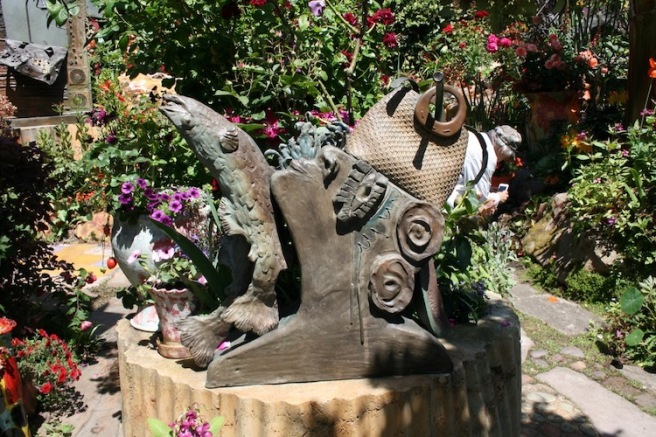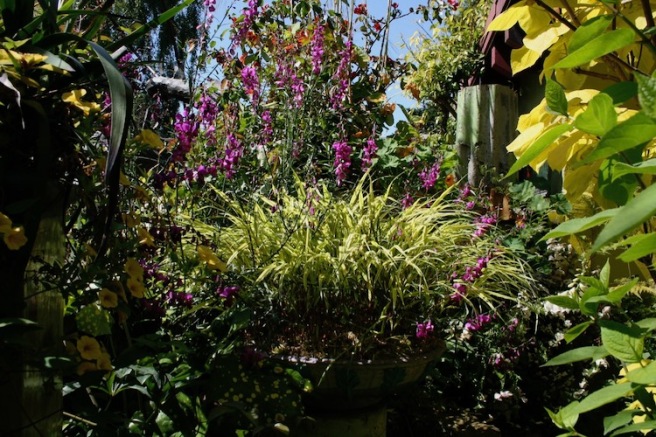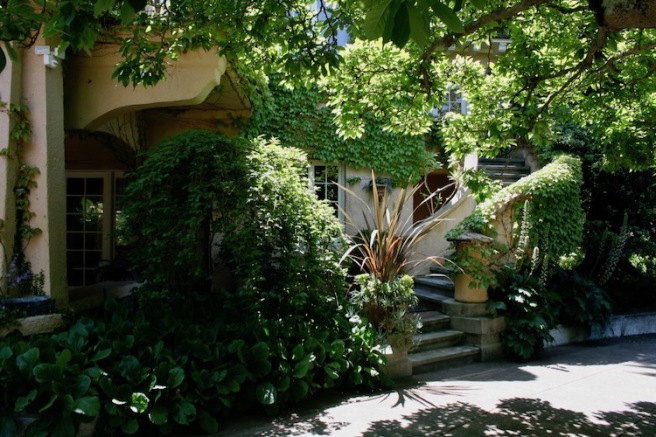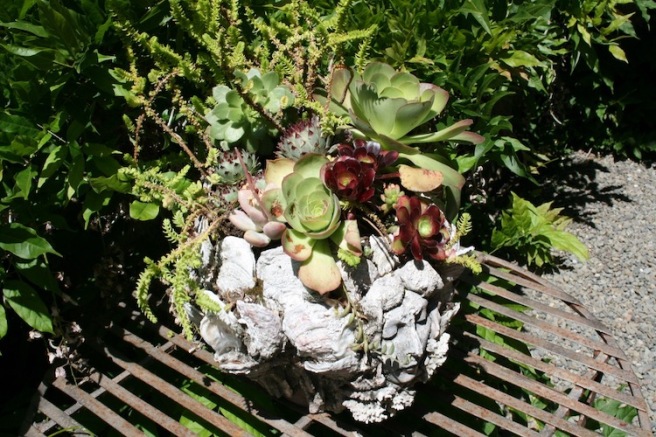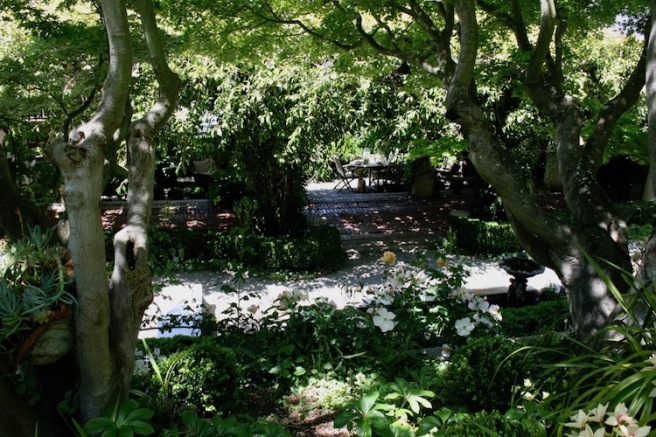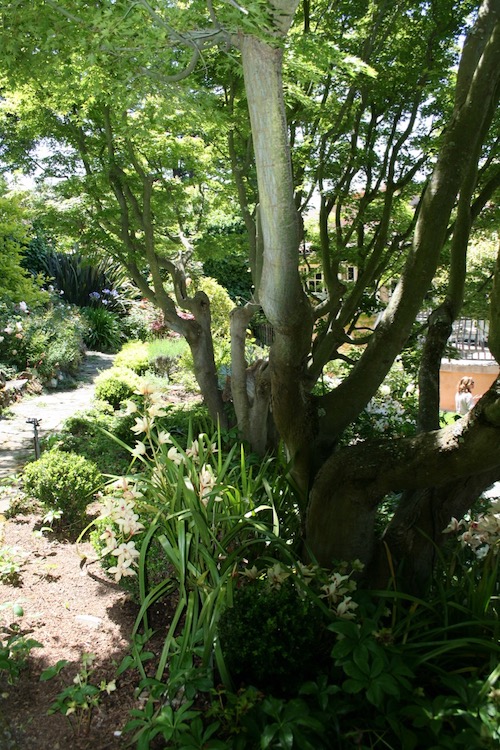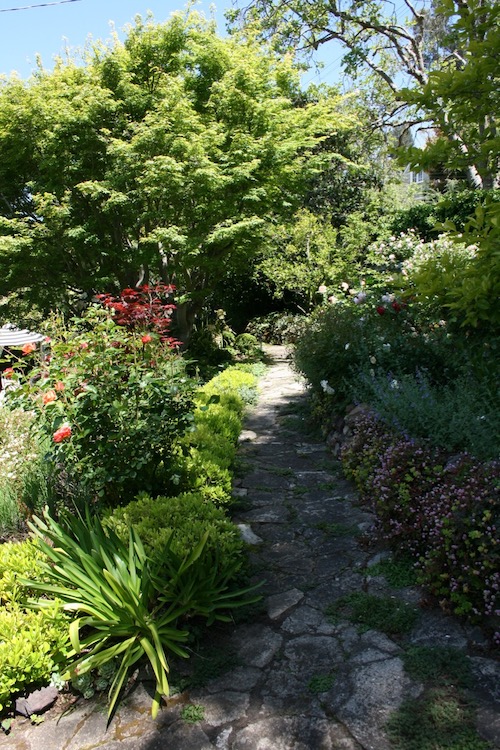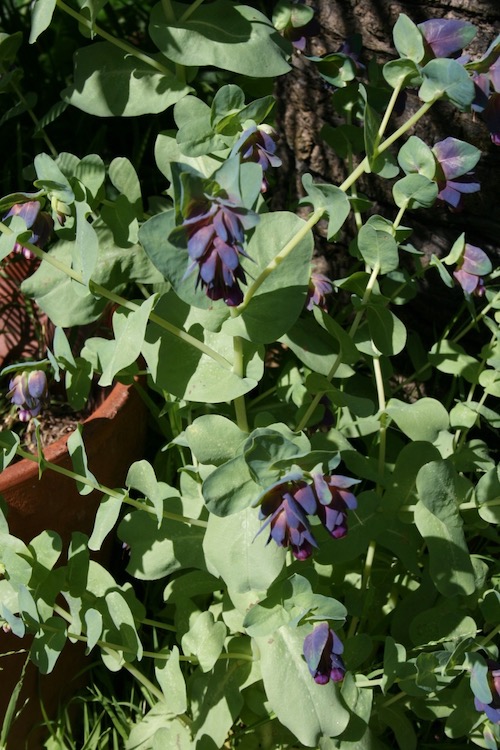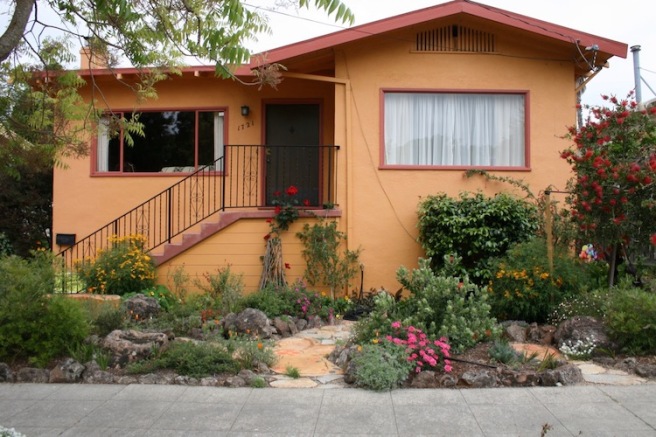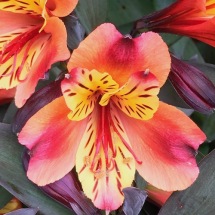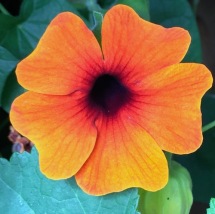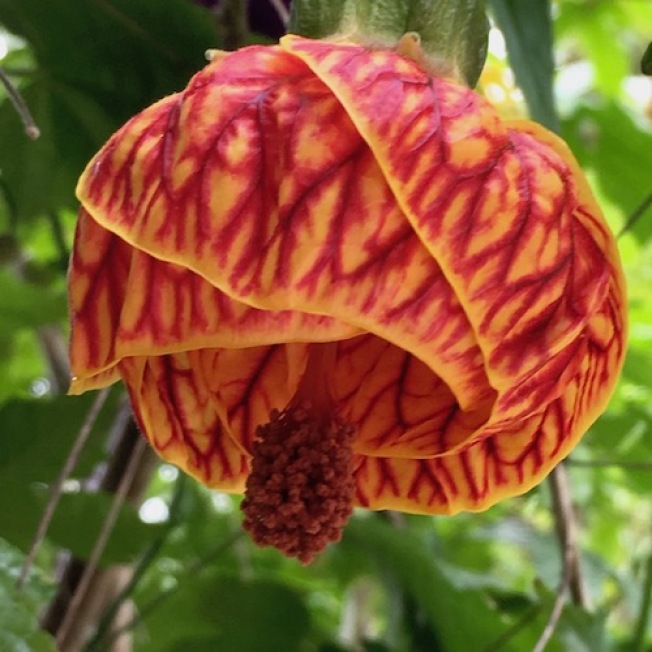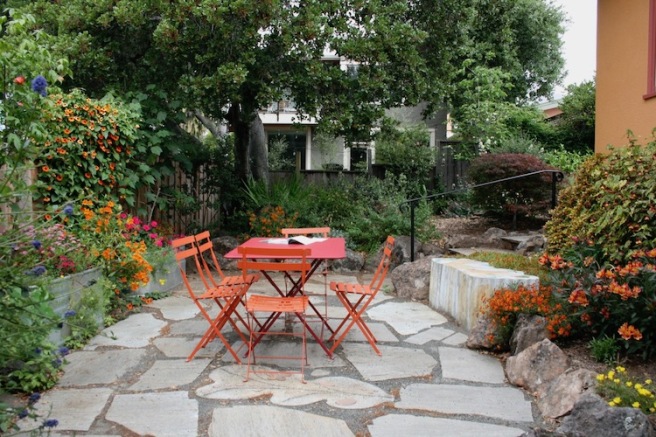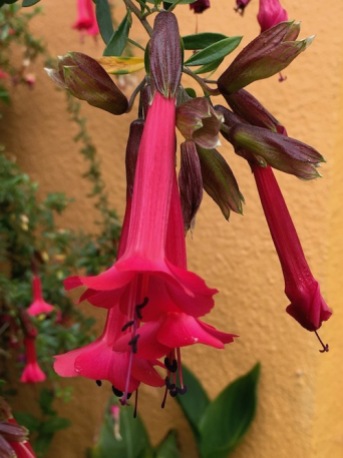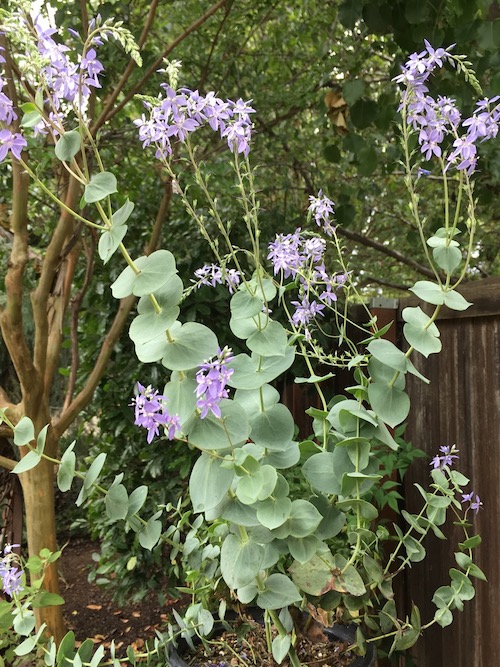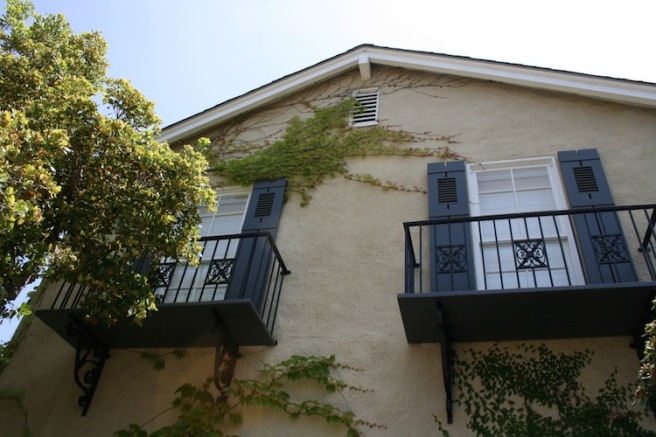Having arrived in Denver yesterday about 4 hours later than anticipated, I lost my half day exploring time to fatigue and dusk. As the 2019 Garden Bloggers Fling itinerary opens with ID badge pick up mid afternoon today followed closely by the evening welcome reception I have only a few hours this morning to wander the Lower Downtown Historic District of Denver–referred to by locals (or perhaps only the tourist maps) as LoDo.

Denver has a wonderful public transit system–I rode in from the airport on the A-Line commuter rail then jumped on the 16th Street Mallride which took me only a block from my hotel. The Mallride runs continuously for about a mile on 16th Street which is closed to other vehicle traffic, with stops every block in both directions. My plan for the morning is to ride it back toward its terminus at Union Station to see the Millennium Bridge then walk the way back to see what’s on this street packed with shops and restaurants.
First, a quick detour to visit an immigrant from my home state of California…

Entitled I See What You Mean but known locally as The Big Blue Bear, this iconic 40 foot bear stands peering into the wall of windows at the Denver Convention Center.

Clearly a favorite spot for tourist photos, the big boy weighs about 10,000 pounds and cost about $425,000 to install. Artist Lawrence Argent was tasked with creating a work which would represent Colorado without the clichéd symbols such as trees and mountains. The bear was inspired by a newspaper article in which a Colorado resident relates encountering a curious bear peaking into his home, the incident being representative of the everyday interaction between humans and wildlife in Colorado.


The bear, constructed in California and installed in 2005, was not always intended to be blue. The artist saw a mock up of the piece mistakenly printed in blue and the Big Blue Bear was born! Artist Lawrence Argent passed away in 2017 and is also known for two other mammoth sized creatures: a 49 foot giant panda in a Chinese Mall and a 56 foot long rabbit hopping through the Sacramento, CA airport.

A quick ride on the 16th Street Mallride takes me to the base of the Millennium Bridge.


The Denver Millennium Bridge is the world’s first cable stayed bridge built using post-tensioned structural construction. No water here–this bridge offers pedestrians and bicyclists a way across the massive railroad track system. Construction started in 1999 and the bridge opened in 2002. The white tapered steel mast rises 200 feet and is connected to the bridge deck and foundation anchored by steel cables. By the numbers the bridge is quite small–only 131 feet long and 26 feet wide.




First stop on my walk back will be Union Station where I arrived in Denver yesterday. It looks totally different this morning. I arrived a bit after 5 pm yesterday–rush hour AND just as the Colorado Rockies-Chicago Cubs game ended and very nearby Coors Field was spilling out its thousands of fans bound for dinner and drinks on 16th Street.


The historic and the modern co-exist peacefully at Denver’s Union Station. Union Station was established in 1881 as the hub of Denver rail traffic and it remains so today, its historic buildings beautifully restored and surrounded by modern shade sails and gleaming highrises. The stationary car is one of the domed cars previously running on the Summit View line.
Visible in the distance from the tracks and platforms was this interesting moving piece of art sitting high over the trains. I finally found the way up to the overhead walkway which offered an up-close view.

I wasn’t able to immediately locate any information about this piece of public art. It very much resembles a moving oil pump like those we see in California around the Bakersfield area.

Union Station’s interior is meticulously restored–like stepping back into time, only with free wi-fi. Also within the station is the upscale Crawford Hotel which offers tours of Union Station in addition to lodging and meeting rooms.


Having entered Union Station on the railroad track side I exited on the Wynkoop Street side where I found this art installation. There is no plaque or attribution but after surfing the net for a bit I located the website of the artist, Jim Sanborn. The piece is a bronze projection cylinder entitled Meridian and stands 12 feet tall and 5 feet wide.


Unfortunately there is no information on the website specific to the piece, other than a photo and its title. This artist has done many projection cylinders–when the piece is lit from the inside at night the words project on the ground around the cylinder. In this case the wording appears to be a chronological history of the area. Notice the words at the top of the piece are in Spanish and follow the date 1776. I will definitely visit this artwork after dark to see the projection!

A few other Denver transportation notes…wildlife apparently both ride bikes and skateboards and would like you to do so also–at least on June 26.
Yes, there are scooters…EVERYWHERE…and people, young and old, are zipping around on them. They not only ride but also take selfies and text at the same time.

Even though I learned yesterday that the absolute best photo op for Coors Stadium, home of the Colorado Rockies, is from a moving train (and I missed it!) I’m going to see what I can see of the stadium by wandering down Wynkoop Street–I think it’s down that way somewhere! I pass the old Union Pacific Railroad building, now a trendy eatery.

The back of the building now houses condos with easy access to the stadium on game day and a variety of dining options just a few floors down.

I’m heading literally toward left field thinking that is all I’m going to get to see of the stadium when a worker from a massive new development being built in the stadium’s west lot approaches me, thinking I’m lost, and tells me how to get to the stadium’s main entrance.


There were a number of these nicely shaped trees near the stadium. The leaves were two fairly distinctive colors–limey and medium green next to each other. I am sure by the end of my Denver daze I’ll know what these are.
Even without the game day activity it is an imposing building–all red brick with all its trim painted in a rich dark green which I have seen all over the historic district. Much like the blackish green known all over the south as Charleston green, I’m guessing this reminiscent of the forest green is known here as Denver green.
Denver’s got a lot going on in this part of town…

A local craft brewery is growing hops on cables up the side of their building.


A colorful herd of bison (buffalo??) is passing through.


Old and new words have found homes painted on their buildings.

Thrifty, eco-conscious drinkers have pooled their bottle caps to make cool, colorful planter boxes.

What other city has an informational cow?

Colorful planters are springing to life everywhere.
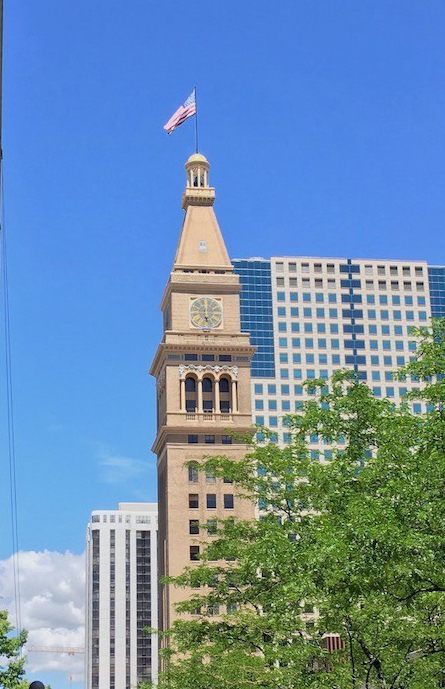
There is an iconic clock tower which can be seen from both ends of the 16th Street mall.


And a money museum at the local branch of the Federal Reserve. I wonder what you can get in the gift shop?
More to show, more to tell as our Fling itinerary is about to begin! Fling? What’s a Fling? Look back at my 2017 post Garden Bloggers Spring Fling…getting to know you! to find out what this is all about. Denver–here we come!


















